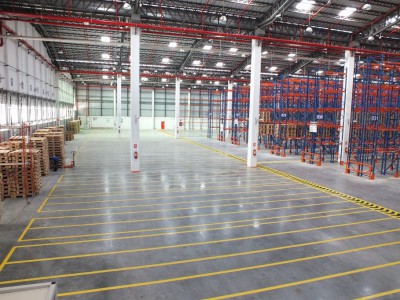How to care for industrial concrete flooring
An industrial concrete floor is probably the hardest-working part of a warehouse or factory. It is a vitally important component too, as a damaged floor surface can disrupt normal business operations, and leave building owners and operators with unwelcome repair bills.
Materials handling vehicles can be slowed down because of an uneven floor; and they can suffer premature damage and higher servicing costs from jolting across a damaged surface or expansion joint.
So what steps should be taken to protect industrial concrete flooring?
1) Choose industrial concrete flooring products with care.
Before the building is even created, consider what perils the floor may have to endure during its lifetime. Is there is a risk of impact damage from tools being dropped; or abrasion damage from crates being scraped across the floor; or from oil or solvent spillages? Investing in the right surface hardener will protect the industrial concrete flooring from the start, giving it a much better chance of surviving these kinds of threats. It will also result in reduced floor repair and maintenance costs in the years to come.
2) Don’t take short-cuts with curing.
Unless the concrete curing process is properly managed, slab strength will be compromised, and the risk of cracking will increase. A concrete curing agent controls water evaporation during the cure, which means the slab will cure evenly throughout its depth. The result will be a strong, durable concrete slab.
3) Seal the joints.
Saw-cut joints are a common way to control concrete floor shrinkage in the days and months after the pour. But they are vulnerable to damage once vehicles and pedestrians move across them. Filling these joints with a backer rod and concrete joint sealant reinforces the joint arrises, making them less susceptible to impact damage. Because joints continue to expand over the first 12 months or more, it is advisable to seal the joints initially with a flexible sealant, and replace this with a permanent hard sealant once the joint has fully expanded.
4) Establish a cleaning regime.
Firstly, any residual curing agent must be removed, before the floor is properly cleaned, then finished or sealed. After that there should be daily cleaning, and weekly or monthly polishing to maintain the floor’s appearance and protection. Regular cleaning will also mean that any floor damage is noted quickly, so that repairs can be made with minimal cost and disruption before the damage increases.
These four steps will help to build strong and durable industrial concrete flooring. The building owner will be repaid with a longer-lasting floor, and lower floor and vehicle maintenance costs.




